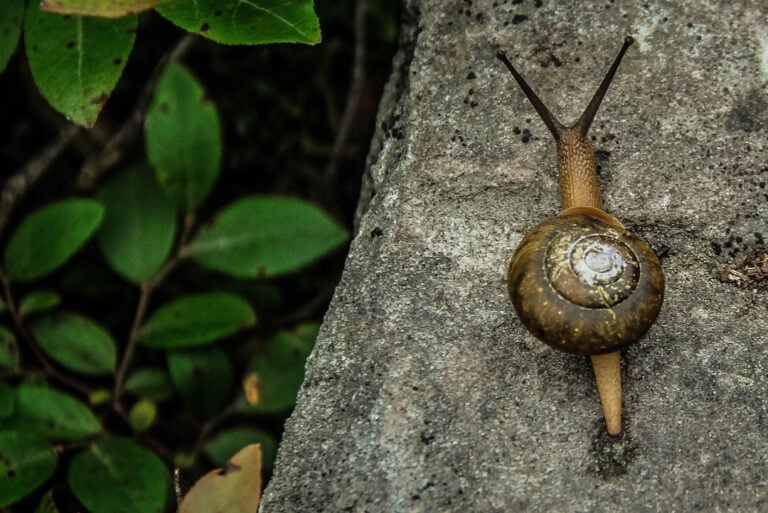The Ins and Outs of Snail Lifespan: How Long Do Snails Live?
The question How long do snails live? unveils a captivating exploration into the lives of these intriguing creatures. Snail lifespans can fluctuate widely depending on factors like species, environmental conditions, and care methodologies. Let’s delve into the intricacies of snail lifespans and reveal how to help them thrive.
Lifespan Overview
1. Wild Snails: Generally, wild snails live between 2 to 5 years.
2. Captive Snails: With optimal care, they can thrive for up to 15 years.
3. Common Garden Snails: These typically have a lifespan of 3 to 5 years.
Snails are remarkable organisms that find habitats across various ecosystems, either in the wild or as cherished pets. Their longevity hinges on the specific species and the conditions they encounter. In the wild, snails battle threats from predators and environmental shifts, significantly reducing their life expectancy. In contrast, snails living in controlled environments, like terrariums, often experience a much longer lifespan.
Factors Affecting Snail Lifespan
Environmental Conditions
Snails are particularly sensitive to their surroundings. Moisture is critical for their survival since they can quickly lose water through their soft skin. They typically become most active during the night or right after rainfall when moisture levels rise.
Temperature is another crucial factor. Snails flourish in moderate conditions, and extreme temperatures can be detrimental. To cope, snails may enter hibernation or estivation.
– During hibernation, snails withdraw into their shells, sealing off with mucus to conserve bodily moisture and energy throughout winter.
– Estivation, on the other hand, occurs during oppressively hot or dry spells, allowing them to evade dehydration.
Nutrition and Diet
A snail’s diet plays a pivotal role in determining its growth and long-term health. As herbivores, snails primarily consume plants, fruits, and vegetables. To maintain a robust shell, they require a solid calcium source. In nature, they often derive this from the surrounding environment, like limestone or chalky soil. For those kept as pets, calcium can be supplied through cuttlebone or crushed eggshells.
Feeding habits can differ across species; however, a nutritious and balanced diet can significantly enhance a snail’s lifespan. Regular feedings with fresh produce and maintaining a clean habitat are essential for the health of pet snails.
Species-Specific Lifespans
Various snail species exhibit different longevity:
– Land Snails: Common garden snails (Cornu aspersum) usually live 2 to 3 years in the wild, but with proper care, they can thrive up to 5 to 7 years in captivity. The larger Roman snail (Helix pomatia) can live as long as 15 years.
– Sea Snails: Typically, these creatures tend to have shorter lifespans, often living just a few years due to harsher environmental challenges and numerous predators they face.
– Freshwater Snails: Snails like the apple snail may have lifespans of 1 to 3 years in a well-maintained aquarium.
– Giant African Snails: These remarkable snails can live for up to 10 years in captivity, although they are illegal to own in many regions due to their invasive nature.
Predators and Habitat
Snails must contend with various natural predators, including birds, mammals, and even their fellow snails. For instance, song thrushes are known to use stones to crack open snail shells, while some frogs can swallow them whole.
Human-induced threats, like pollution and habitat destruction, have also decimated many snail populations. In their natural habitats, snails often find shelter under rocks and logs to evade predators and conserve moisture. Mimicking these environmental factors can help extend lifespans in captivity.
How Long Do Snails Live in Different Environments?
Wild Snails
In the wild, snails grapple with numerous adversities that can curtail their lifespans. For most, including the common garden snail, life expectancy typically hovers around 2-3 years. While larger species like the Roman snail may reach up to 15 years, mortality rates are notably high among juvenile snails.
Captive Snails
In captivity, snails generally enjoy longer lives due to reduced predator threats and better living conditions. For example, common garden snails can live up to 10 years, while giant African snails often extend their lives to around 15 years with appropriately maintained habitats.
Garden Snails
Garden snails, prevalent in backyards, usually live 2-3 years in the wild. However, in carefully monitored environments, they can thrive up to 5 years with proper diet and care. A varied diet of leafy greens, regular misting, and a calcium source can significantly impact their overall health.
Aquarium Snails
Aquarium snails, like the mystery snail, may live 2-3 years, contingent upon the quality of water and tank conditions. Offering a balanced diet enriched with algae wafers and a calcium supplement, along with regular tank maintenance, is vital to ensure their health.
Conclusion: How Long Do Snails Live?
In conclusion, understanding how long snails live involves recognizing the various factors that influence their lifespans. Whether in the wild or as pets, considering their unique requirements and environmental needs is essential for their well-being.
To promote optimal care for your snails:
– Environment: Ensure a moist but not overly wet habitat using clean potting soil or sphagnum moss.
– Diet: Supply a diverse array of vegetables and fruits, alongside a calcium source like cuttlebone for shell health.
– Observation: Dedicating a few moments daily to observe your snails can help spot potential issues early and can even be a soothing experience.
By adhering to these guidelines, you can significantly enhance the quality of life for your pet snails, allowing them to live longer, healthier lives. Explore your fascination with these remarkable creatures, and you might just discover the unique joy they bring to your life!


















